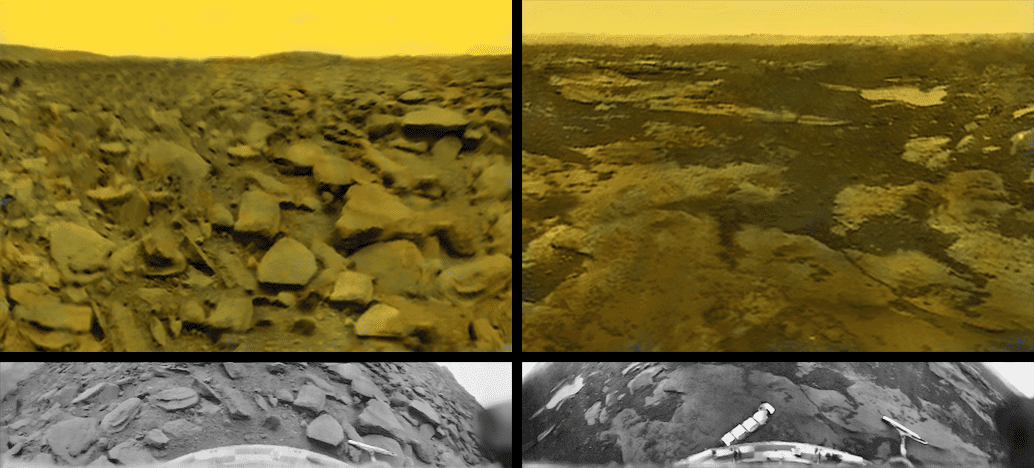When it comes to the surfaces of the other rocky worlds in the Solar System, Mars is probably the best photographed, from both orbit and by several landers and rovers that have mapped and snapped its rocky terrain from the surface. Mercury has been pretty well mapped and imaged too. However, we only have a handful of photos from the surface of Venus, and no new ones in over 40 years.
This is not just a question of laziness from space agencies – Venus is not an easy planet to photograph. It is shrouded in a thick blanket of clouds, extending for 20 kilometers (12 miles). The layer is about 48 to 60 kilometers (30 to 37 miles) above the surface of the planet. These clouds are within a bigger haze layer, extending maybe as low as 32 kilometers and as high as 90 (20 to 56 miles).
Studying it from orbit using visible light is a no-go. For this reason, observations of Venus have relied on radar technology, which can penetrate the thick clouds and reveal its rough surface. This is how researchers determined how slow its day is. But what if we’d like to see how the surface looked with our own eyes? Well, that is an extremely risky business, even for sturdy robotic explorers.

The surface of Venus from Venera 13 front camera. Image Credit: Russian Academy of Sciences, courtesy of Ted Stryk
The atmosphere is heavy, pushing down on the surface with a pressure 93 times what we experience at sea level here on Earth. It is mostly made of carbon dioxide, although there are small traces of reactive compounds such as sulfuric and hydrochloric acid. It is also hot enough to melt lead. Everything on Venus makes it the least friendly environment it can be for landers, and that’s why we have only limited observations from the surface. However, there are some photos thanks to the efforts of soviet scientists.

The surface of Venus from Venera 13 rear camera. Image Credit: Russian Academy of Sciences, courtesy of Ted Stryk
The first one was Venera 3, which crash-landed on Venus on March 1, 1966. This was the first time a spacecraft reached the surface of another planet. The subsequent three missions delivered insights into the atmosphere of the planet but were destroyed before they reached the surface. It was only in 1970 that Venera 7 soft-landed on Venus – the first successful landing on another planet and the first transmission of data working on the hellish world for 23 minutes. Venera 8 followed two years later.

Things changed in 1975: Venera 9 and 10, just three days apart, landed on the planet and took pictures of the surface. The two subsequent landers had camera failure, but they managed to capture data on the color of the sky. Finally, Venera 13 and 14 in 1982 delivered the first views of the planet in color. Those snaps revealed a dark rust-colored surface under an oppressive yellow/orange sky. Very apt for such a hellish world.

Picture of the surface of Venus from Venera 14 rear camera. Image Credit: Russian Academy of Sciences, courtesy of Ted Stryk
The Venera missions were great achievements, but they won’t be the last we see of the Venusian surface. NASA’s DAVINCI mission is expected to launch in 2029 and land two years later. It will study the atmosphere and take high-resolution pictures of the surface. Hopefully, NASA will not delay this mission, as has done with VERITAS, and we won’t reach the milestone of going 50 years without new images of the surface of Venus.
Source Link: These Are The Only Photos Ever Taken Of The Surface Of Venus